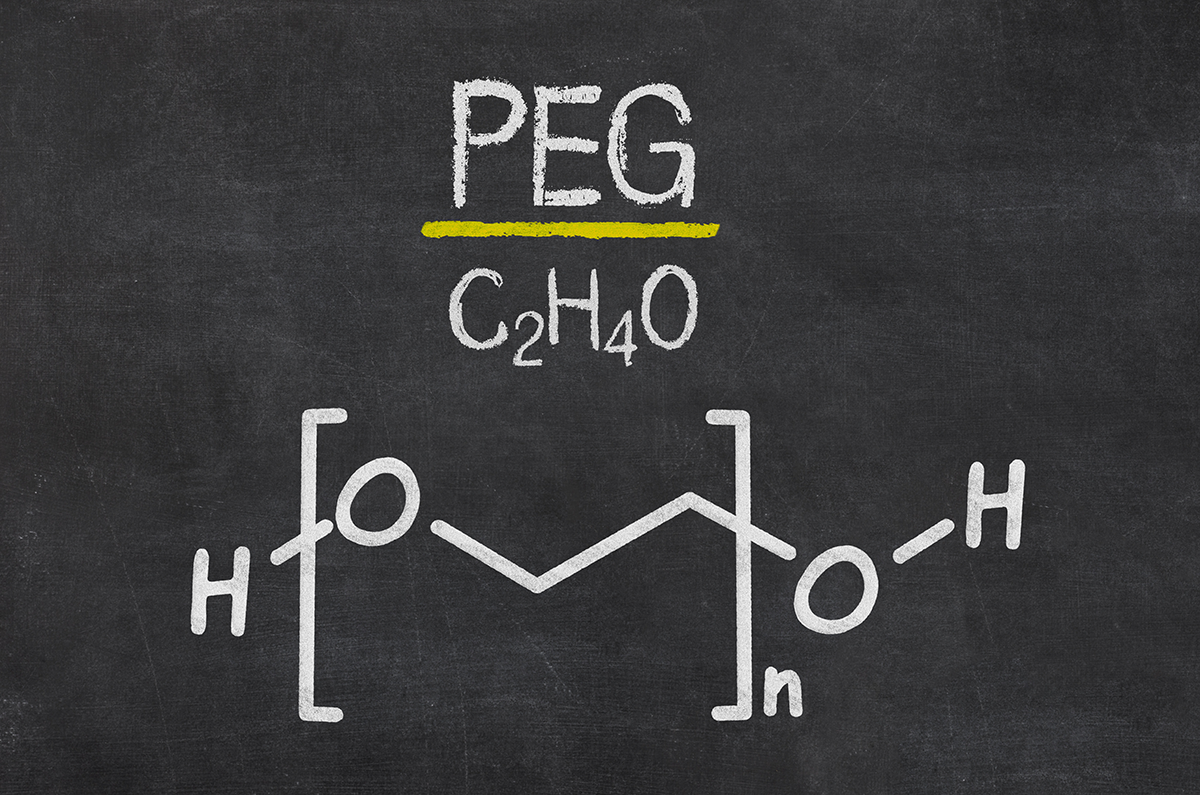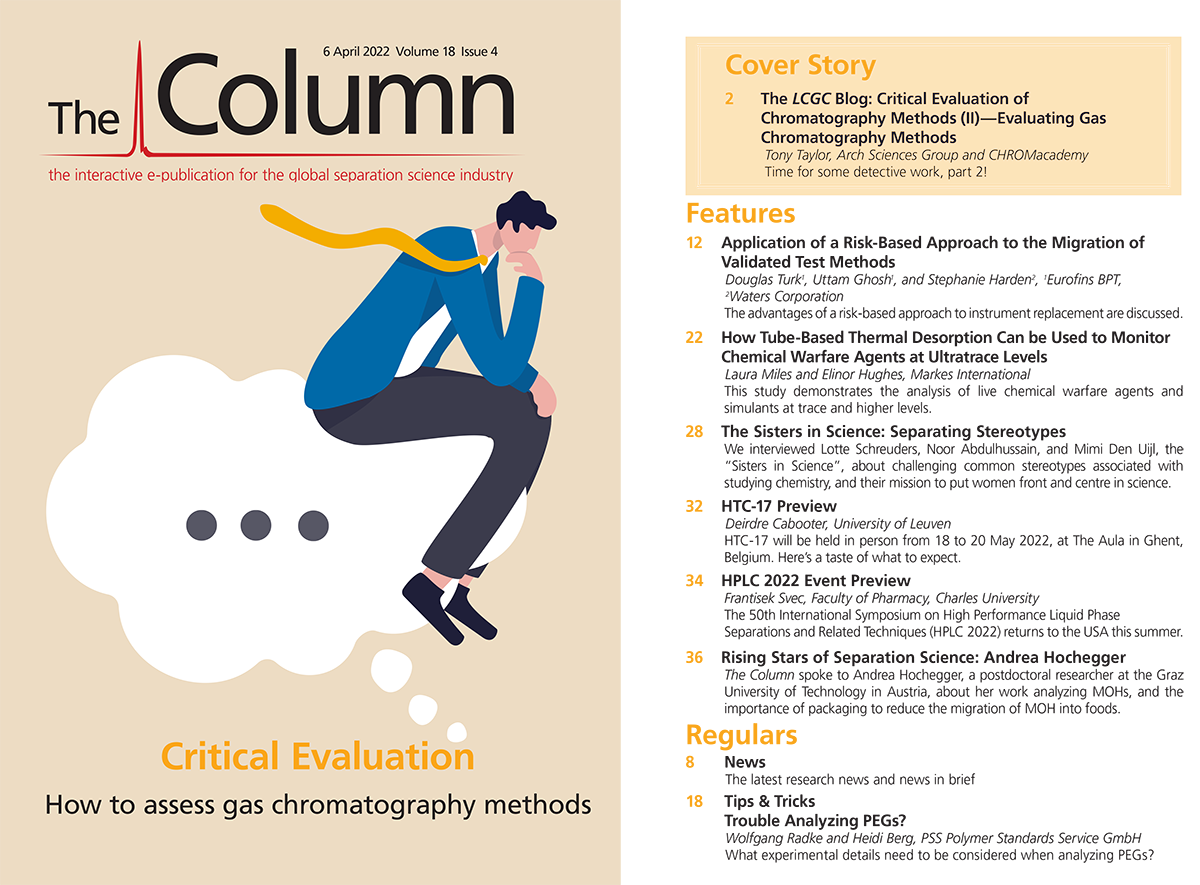Lipodomic Analysis Using UHPSFC–MS
The analysis of lipids in biological systems, also known as lipidomics, is an incredibly diverse area of research, with wide-reaching consequences, from the understanding of cell signalling to unravelling the complexities of diseases, such as cancer or neurodegenerative disorders. Chromatography plays a key role in lipidomic analysis, with three main approaches emerging in the form of separation coupled to mass spectrometry (MS), direct infusion of the sample to MS (shotgun), and desorption ionization techniques coupled to MS. The separation prior to MS is generally performed using either gas chromatography (GC) or liquid chromatography (LC), but both techniques have their limitations and strengths. In the case of GC, the necessity of derivatization, and in LC the characteristic polarity ranges depending on the separation mode. However, researchers from the University of Pardubice, in Pardubice, Czech Republic, believe a third technique, which combines the advantages of GC and LC, is worth consideration and have recently published a paper making the case (1).
Known since the 1980s, supercritical fluid chromatography (SFC) uses a supercritical fluid as the mobile phase. The physicochemical properties of the supercritical fluids lead to low back pressures, allowing the use of high flow rates and good solubility properties when used as the mobile phase. However, SFC has struggled over the years to gain acceptance because of instrumental issues in the early stages of its development. However, modern ultrahigh-performance supercritical fluid chromatography (UHPSFC) systems now offer stable and reproducible results and the researchers believe the technique can be utilized effectively across the ‘omics' fields.
“The reproducibility was a problem in the past for SFC, and for me, this is the main aspect why now SFC can reach the level where the full potential of this methodology can be explored and used by researchers worldwide,” said Michal Holčapeck. “The advantages of UHPSFC–MS over ultrahigh‑pressure liquid chromatography (UHPLC)–MS are based on the physicochemical properties of the supercritical fluid or eventual subcritical fluid, which is often the case in real operating conditions. The polarity of supercritical carbon dioxide as the most prevailing SFC solvent is comparable to that of hexane and, therefore, the method is perfectly suited for all nonpolar molecules. This results in an outstanding sensitivity for nonpolar molecules. The speed of analysis is a highly appreciated feature, especially for high-throughput analysis. The van Deemter curves for UHPSFC and UHPLC clearly explain why we can increase the flow rate without loss of performance and with reduced risk of system overpressure. Moreover, there is still space for improvement when the pressure limit of current systems is increased. In some cases, UHPSFC offers different selectivities, which may be an example of ultrafast chiral separations of some pharmaceutical compounds.”
For those considering using UHPSFC–MS, the researchers believe the methodological switch from UHPLC–MS is not too difficult, as both techniques are very similar, plus the potential benefits, especially for nonpolar lipid classes as well as polar phospholipids and sphingolipids, are well worth consideration.
“I think that the methodology itself is ready to be immediately adopted by the wider research community,” continued Holčapeck.
The robustness and high-throughput of UHPSFC–MS potentially makes it ideal for routine clinical laboratories with thousands of samples; despite its past difficulties, SFC could be worth a second consideration.
Reference
- D. Wolrab et al., Trends Anal. Chem. 149, 116546 (2022). doi: https://doi.org/10.1016/j.trac.2022.116546

New Method Explored for the Detection of CECs in Crops Irrigated with Contaminated Water
April 30th 2025This new study presents a validated QuEChERS–LC-MS/MS method for detecting eight persistent, mobile, and toxic substances in escarole, tomatoes, and tomato leaves irrigated with contaminated water.
Accelerating Monoclonal Antibody Quality Control: The Role of LC–MS in Upstream Bioprocessing
This study highlights the promising potential of LC–MS as a powerful tool for mAb quality control within the context of upstream processing.
University of Tasmania Researchers Explore Haloacetic Acid Determiniation in Water with capLC–MS
April 29th 2025Haloacetic acid detection has become important when analyzing drinking and swimming pool water. University of Tasmania researchers have begun applying capillary liquid chromatography as a means of detecting these substances.

.png&w=3840&q=75)

.png&w=3840&q=75)



.png&w=3840&q=75)



.png&w=3840&q=75)

















